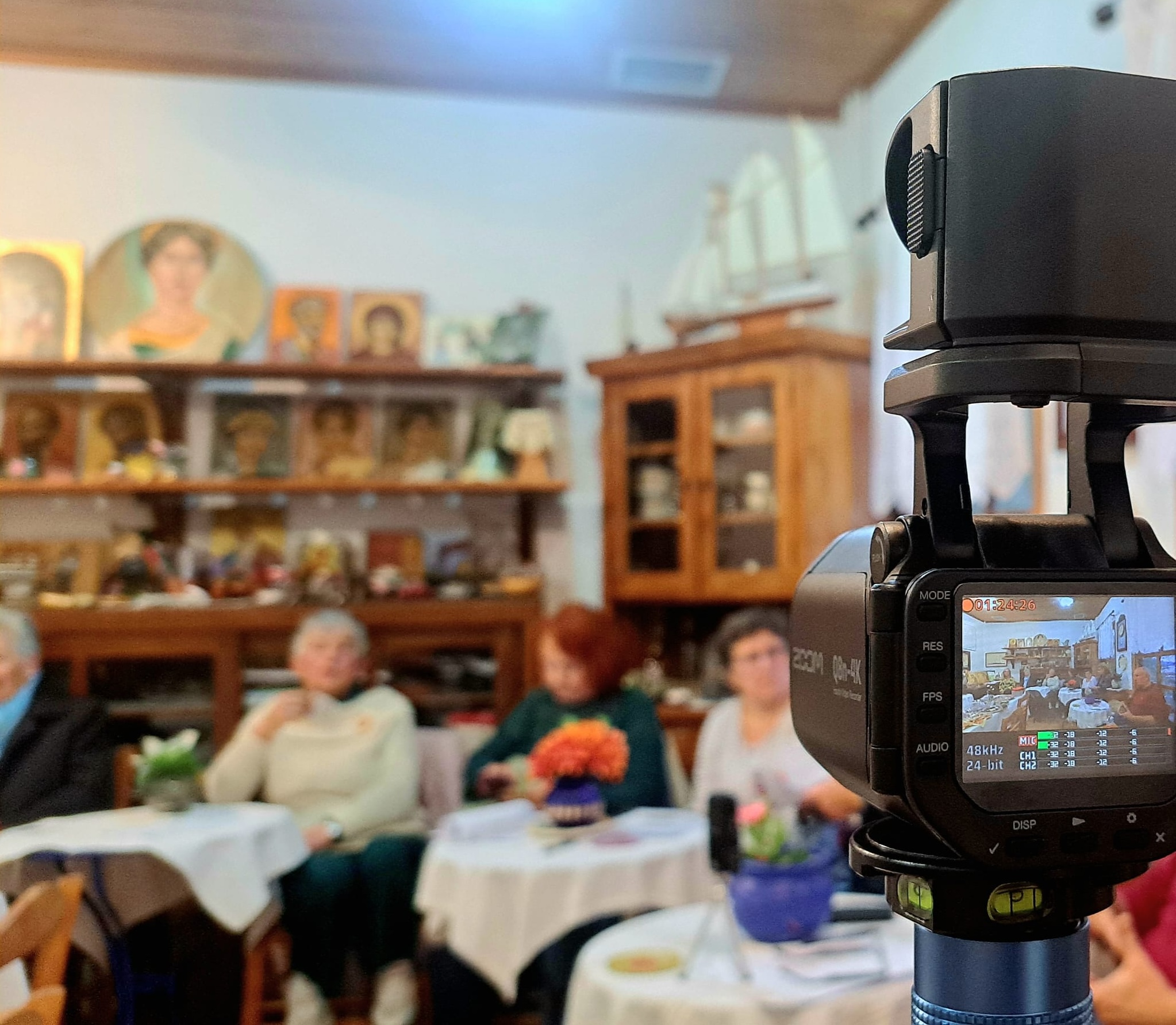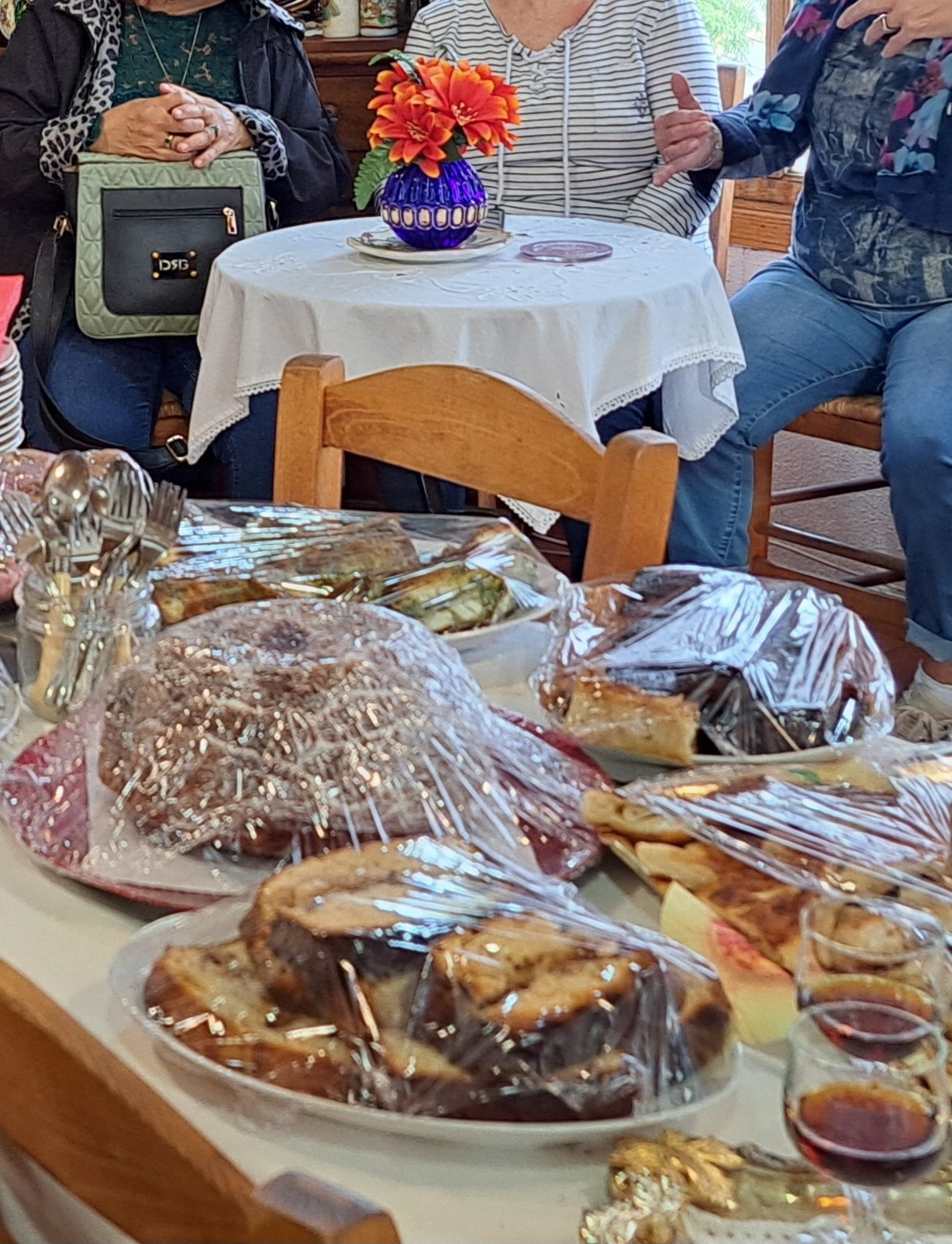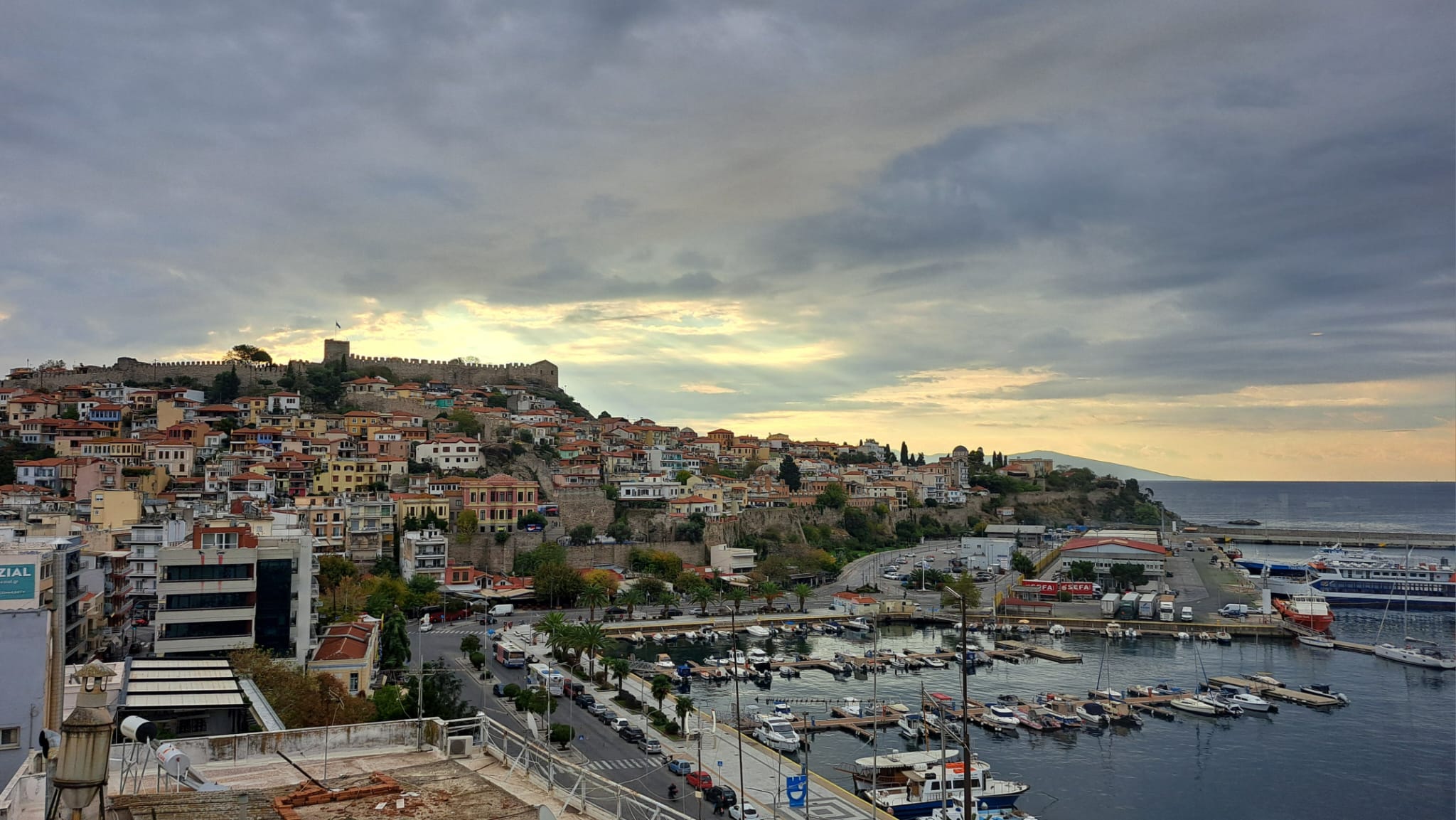31 OCT 2025
Intimate Stories and Temporal Experiences Recorded in INT-ACT Narrative Studies
A personal fieldwork reflection

We have made a long journey of gathering narratives related to very special and unique places in Portugal, Scotland, Finland and Greece. We have listened to transformative stories, walked with people and their place-bound observations and memories, and been moved by immense layers of history and temporalities in researching intangible cultural heritage related to physical sites at different edges of Europe. The heritage sites selected for the INT-ACT project’s studies reflect our attendance to diverse societal issues, namely: 1) cultural tourism, 2) ageing societies, 3) disappearing communities, and 4) immigration and multiculturalism. Despite the diversity of our sites, along the ethnographic walk we have encountered plenty of spontaneous connections between them.
The centennial old town with remains of ancient Greek, Byzantine and Ottoman histories, Panaghia, in the city of Kavala in Greece is the fourth and last study site in the Horizon Europe -project INT-ACT: “Intangible cultural heritage bridging the past, present and future”. (See our previous blog posts on Panaghia/Kavala.) With its temporal layers of cultural and religious diversity, the stories and experiences related to Panaghia reflect on INT-ACT’s forthcoming case study on immigration and multiculturalism. Building on the fieldwork and deep interviews conducted by the social geographer Dr. Manolis Pratsinakis working in the Kavala team, we – Aalto and Kavala partners – organized together a series of cartographic storytelling workshops hosted by Panaghia's Cultural and Beautification Association “To Kastro” at the old madrasa community centre next to the beautiful Halil Bey mosque, dating back to 16th century.

We invited both old locals and newcomers – with different feelings of belonging – to share their stories related to Panaghia. We gave them a choice of simple maps for taking a little walk on the surroundings on their own pace, paying attention to their different sensations, observations and memories. After drawing notes on the maps everyone was invited to share a story of their own in turns. This was again a different iteration of our narrative methods, which will be reflected meticulously in forthcoming academic publications for others to use. Our wonderful study participants shared stories rooted in displacement and resilience: of families who lost their homes a century ago and of those who inherited these homes while carrying memories of forced migration and rebuilding. Together, the community reimagined Panaghia not only as a heritage site but also as a living archive of belonging, memory, and change.


Storytelling and on-site walks
The multi-sited ethnographic study of INT-ACT – and my own field journey of on-site walking interviews and storytelling workshops – began in Portugal 2024, by learning about people’s profound experiences at megalithic stone compounds of Almendres, Vale Maria do Meio and Portela dos Mogos, plus other heritage sites such as Rocha de Mina, in Alentejo. I felt immense delight in getting to know both the timeless atmosphere and seasonal and astronomic relationships between the standing stones, celestial bodies and the landscape. The ancient standing stones have witnessed changing human culture from diverse Neolithic lives to Roman constructors abducting some of the stones to cork farming to contemporary archaeologists’ and foreign tourist groups’ attention.
Taking those experiences with us to the second field site, Callanish stone circles in the remote Outer Hebrides of Scotland, together with our Edinburg team’s archaeologist Dr Ali Nunez Garcia, I listened to stories of awe, mystery, transformative wayfinding, and sadness for past displacement and exploitation of local environments, with need for more care and respect for these powerful and ancient gathering sites. Themes on wellbeing through gathering at the stones and open questions of access to them were very much the same. Forward to the third study site, Koli in Eastern Finland, again whispers from old stone caves and hills full of layers of stories talked of nature’s power, loss and hope – this time both through archives and personal walking interviews with local artists and crafters. The transformation of a historical reciprocal relationship with the natural environment providing livelihood to people in tune with seasonal cycles has given way to modern exploitation of nature’ resources, threatening both biodiversity and people’s wellbeing. The natural-cultural heritage sites seem to reconnect people with seasonal and other environmental affects, which also creates subsistence through sustainable tourism and wellbeing services.
In these ancient sites it is easy to feel that we indeed share the presence of the same stones with our distant ancestors. Paraphrasing the Portuguese archaeologist Manual Calado: in the ancient times, it was easy to think that all the living beings like animals and plants die, but stones are forever.


Stones are forever: a creviche into the deep of the Koli hills on the left. On the right, the Nymphs’ Stones natural heritage site on the way to Kavala from Thessaloniki.
In Kavala, I and professor Masood Masoodian from the Finnish team did not share a common language with our interlocutors, but we were warmly received by the “Cultural and Beautification Association To Kastro. Upon arrival at the community meeting space for a gathering of the older generation of residents, I felt a striking similarity with the Karelian grandmothers I had just met in Koli. The carefully crafted table clothes, self-made paintings, Orthodox icons and overflowing decorations surrounding a plentiful selection of different home-made pies and pastries was a common note. Foremost, one of the resident women was singing a melody. It resembled an old Finnish melody, so I sang back a verse of something I thought was alike. As of Karelian background I also identified with singing and it created a warm affective bond. The similarities run even deeper: in the tragedies of lost homelands. Over 400 000 Karelians were evacuated from Finnish Karelian territories lost to the Soviet Union in the 1940’s, whereas he Greek population of Panaghia is largely descendant of relocated people from Minor Asia during the forced population exchange between Greece and Turkey in 1923, which affected directly 1,6 million people, mostly of them Greek.

On the ancestral hill reaching towards the blue sky, in the small peninsula that hosts the old town of Panaghia, the Aegean sea is ever present. Many shared memories of swimming from the rocks, further away from the sandy beaches prepared for tourists. Overall the tobacco industry that once sustained the city of Kavala has given way to tourism-based services. All the heritage sites in the INT-ACT studies struggle with the two-edged swords of tourism: how to maintain stability for local residents while providing access for visitors? How to preserve historic environments and at the same time make them accessible for people to enjoy? How to negotiate sustainable rural or urban ecology and visitor infrastructures?
Hearing about the emotional and experiential moments others have experienced in these environments can open up horizons for broader understanding of local preoccupations, and for meaningful personal experience. In the INT-ACT demonstrators – immersive exhibitions about emotional, experiential and environmental dimensions of the respective sites – we show some ways how these stories can be brought to life. As part of INT-ACT’s co-creation methodology, the fieldwork contributes to the development of the immersive demonstrators, rest of which will be launched in 2026. These digital tools aim to communicate not just the historical facts but the human depth of heritage, highlighting how ICH continues to shape lives today.
Through accessing the intangible dimensions, travelling and visiting heritage sites can be a source of deep learnings, transformative personal experiences, and broadened understanding of other people, cultural values and difference. Through connecting with nature – ancient stones erected by distant human ancestors, ever repeating tides of the sea, and stony hills walked upon by countless generations – visitors and locals alike have the chance to cultivate an attitude of care and meaning towards natural and cultural heritage.
We extend our heartfelt thanks to all the research participants and collaborators for their generosity, wisdom, and shared commitment to exploring cultural memory for imagining better futures.